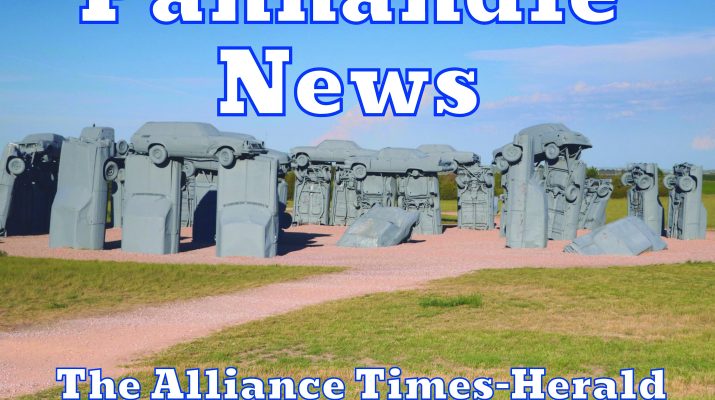CHADRON – In April, Chadron State College student Corey Griffin of Omaha won the Best Undergraduate Presentation in Geoscience at the Nebraska Academy of Sciences (NAS) conference for his Analysis of Know Your Well Data on NUREP Data to Understand Changes in Groundwater Contamination. Griffin is a double major in environmental geoscience and studio art. NUREP was the 1980 Nebraska-South Dakota Uranium Resource Evaluation Project conducted by the U.S. Department of Energy.
“I’m really proud of where my paper led me,” Griffin said. “We mapped the new data with 1980 NUREP data and compared the groundwater samples taken then to the groundwater samples we took. Some were the same wells. Some were near the 1980 wells. The research we did was really important and I was happy to be a part of it. We have a more modern analysis of contaminants in our water supply now than we did two years ago.”
The Know Your Well (KYW) project was established in 2016 by the University of Nebraska Lincoln to involve high school students in sampling wells because the majority of Nebraska residents get their drinking water from wells. At Dr. Tawny Tibbits’ invitation, Griffin helped initiate the KYW program in the Panhandle in 2020.
“Because there are no EPA regulations regarding wells, you have to check your wells yourself. So UNL created this project to develop a wide base of well samples so we can track how our groundwater is doing,” Griffin said. “For now, we are testing Dawes County. Hopefully Box Butte County and Sioux County will join in.”
Four hundred wells were sampled by the NUREP testing.
“The project was part of a search for alternative fuel sources during the energy crisis of the late 1970s and early 1980s. Its sole goal was to find material for nuclear power plants. The Crow Butte Uranium Mine in Crawford was a result. There is potential that a second uranium mine could be built in Marsland south of Crawford,” Griffin said.
“My project was asking if the uranium in water wells has changed since mining started,” Griffin said. “I’ll be honest that the research didn’t help that fear. We are finding some really high amounts of uranium in some people’s well water. That’s really disturbing. Four or five times what the EPA says is safe.”
After Griffin was trained by Dr. Mike Leite, he collected some samples and instructed Crawford High School students about the process at a well near Whitney, Nebraska.
“Then they sampled 10 wells in three months. And the data from the Crawford students starting to fill the gap from 1980,” Griffin said. We really haven’t gotten enough samples yet to conclusively say yes or no We only got one sample that actually changed. It is near the uranium mine. But it is also by a road, a town, and a sewage treatment plant, so it could be multiple factors,” Griffin said.
Crawford High School students led by CSC alum David Keim sampled unfiltered well water and collected GPS coordinates. With the help of Keim, the high school students tested for nitrites, copper, and coliform bacteria. They sent water samples to the Nebraska Water Center at UNL for results about uranium, arsenic, and other contaminants, according to Griffin.
“It’s a win-win for everyone. All of this information gets sent to one database that can be accessed,” Griffin said. “This is kind of a revolutionary project because everyone has to test their wells individually if they want to make sure they’re safe. With what we’re doing, we’ll be able to create maps and show where there are hotspots.”
Fourteen landowners were willing to participate. Although the number doesn’t seem impressive, Griffin said he was pleased with it.
“It’s actually quite a feat to go through the paperwork process to get even one well tested,” Griffin said.
Future testing will be left to Panhandle high school students along with demonstrations from CSC students who will be able to use the data for capstone projects in geoscience or chemistry as long as they help collect some of that data, Griffin said.
“Uranium and nitrates and copper and arsenic have all been very serious problems, especially in the Panhandle, based on how the groundwater works.

